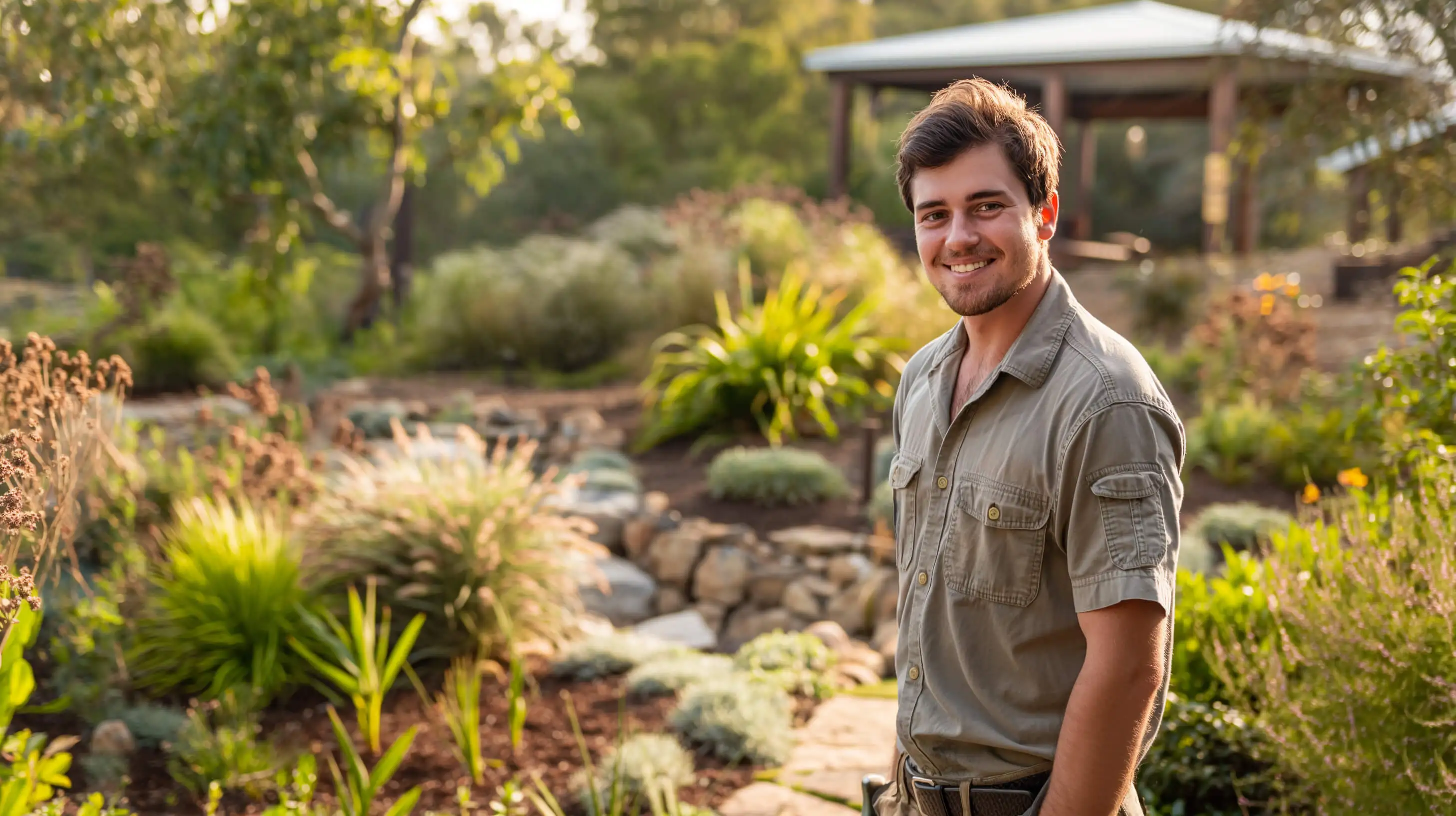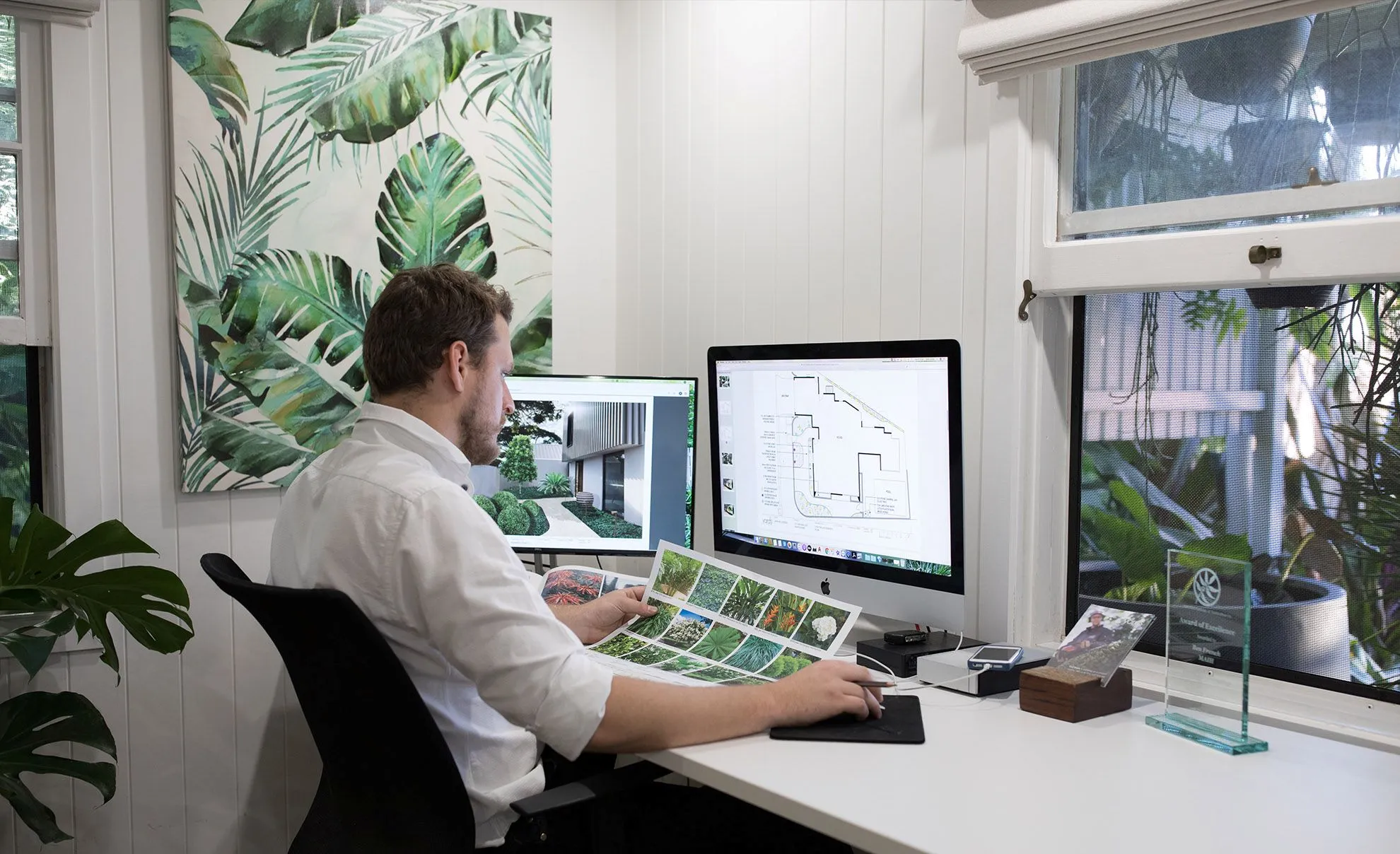
Design places people love — and shape the future of outdoor spaces.
Landscape Architect
As a Landscape Architect, you’ll create outdoor spaces that are functional, sustainable, and beautiful. From public parks and school grounds to town centres, playgrounds and walking trails, you’ll design environments that bring people together — blending nature, culture and clever problem-solving to make shared spaces work better for everyone.

Salary Range
$65,000 – $140,000+ Varies by experience, registration status, sector and practice size

Recommended Training
Bachelor of Landscape Architecture

Job Listings
Browse current job openings and take the next step in your landscaping career.
Job Overview
Landscape Architects design outdoor spaces that are both practical and meaningful. Whether it’s a park, playground, town centre or streetscape, you’ll shape how people experience place — balancing movement, ecology, culture and climate. The role includes site analysis, concept design, planning and documentation. You’ll collaborate with engineers, urban planners, ecologists, clients and hands-on landscape professionals on site — turning design vision into real, usable places. Most Landscape Architects work in private design studios, multidisciplinary firms or government agencies. Some specialise in areas like green infrastructure, inclusive play, climate adaptation or culturally responsive design.

Tasks & Duties
Develop design concepts for outdoor spaces based on site needs, context and stakeholder input
Create master plans, site layouts and staged development strategies
Prepare detailed drawings, construction documents and specifications
Use software like AutoCAD, SketchUp or Revit to model and visualise projects
Communicate design ideas through graphics, diagrams and presentations
Collaborate with councils, consultants and communities throughout the design process
Assess sites for access, vegetation, grading, water movement and ecological value
Integrate sustainable strategies such as stormwater design, native planting or green infrastructure
Coordinate approvals, compliance and timelines across project delivery
How to Become a Landscape Architect
This is a degree-qualified profession with a clear academic and professional pathway. Most practitioners study full-time at university before gaining industry experience and AILA registration.
Bachelor of Landscape Architecture - A 4-year undergraduate degree covering design theory, plant science, construction methods, ecology, software skills and studio practice.
Master of Landscape Architecture - A postgraduate program for those entering from other disciplines or deepening their expertise
Other Key Considerations:
- Software Proficiency Programs such as: AutoCAD, Revit, SketchUp, Adobe Creative Suite, Rhino, Lumion
- Construction Knowledge Understanding of materials, standards and documentation
- Plant & Horticulture Knowledge A strong grasp of planting design, plant selection, and ecological systems is highly valued
- Written & Verbal Communication Essential for reporting, collaboration and client liaison
- Professional Portfolio Required to showcase your design thinking and project work
- White Card (Construction Induction) Required to visit sites
- Driver’s Licence Helpful for travelling between job sites
Career Progression & Pathways
Many professionals start in parks and gardens and build long-term careers in plant care, greenkeeping, turf management, and team leadership, or branch out into their own garden maintenance businesses.
Starter
Graduate Landscape Architect
Skilled
Registered Landscape Architect, Design Lead
Advanced
Senior Designer, Project Manager, Principal Landscape Architect, Studio Director, Urban Design Consultant, Government Advisor, University Educator

Already Working in Landscaping or Horticulture?
If you’ve been working in garden or grounds maintenance, you may be eligible for Recognition of Prior Learning (RPL). This process allows experienced workers to have their skills formally assessed and credited toward the qualification, helping you fast-track your pathway to becoming qualified.
Speak with a Registered Training Organisation (RTO) to explore your RPL options.
Other Key Considerations:
- White Card (Construction Induction) Required to work on school, council, or public infrastructure sites.
- Driver’s Licence Helpful for travelling between job sites or operating equipment like trailers and ride-on mowers.
- First Aid Certificate Often preferred for roles involving public spaces, schools, or recreational facilities.
- ACDC Licence (QLD) This may be supported if weed control is part of your role.
- Professional Industry Membership Joining an industry association like Landscape Queensland can connect you to professional networks, mentorship opportunities, and support services throughout your career.
“Seeing an idea turn into a built reality is the best part of design. It’s not just about plans — it’s about bringing places to life.”

Skills, Attributes & Experience
This is a multidisciplinary profession that blends art, science, communication and project coordination.
This career suits people who are:
- Strong conceptual and spatial design thinking
- Technical skills in documentation and detailing
- Enjoys being outdoors and physically active in all weather
- Familiarity with construction materials and methods
- Plant knowledge and understanding of ecological systems
- Visual communication and graphic presentation
- Collaborative mindset and client liaison experience
- Project management and time coordination
- Written and verbal communication
- Attention to context, culture and place
This pathway is a great fit for people who enjoy active work, solving problems on-site, and seeing tangible results from their efforts.

Not Sure Where to Start?
Take our interactive career quiz to discover which landscaping pathway best matches your skills and interests.
